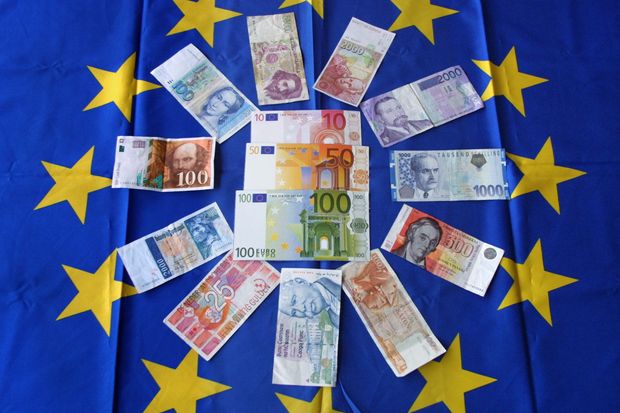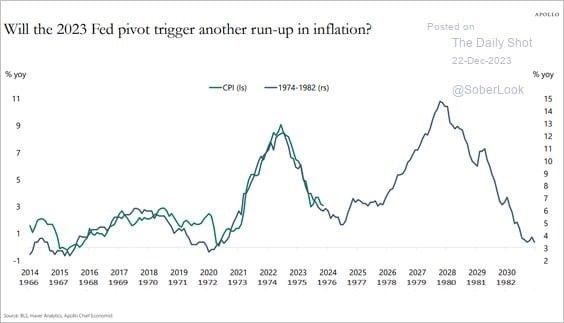Negative yields on long-term European government bonds took financial markets by storm earlier this year but are starting to fade away as investors express renewed optimism about global economic growth.
The yield on 10-year bonds issued by the French and Belgian governments turned positive Thursday for the first time since mid-July. Other European countries that experienced negative long-term rates for the first time, including Ireland, Spain and Portugal, have also returned to positive territory in recent weeks.
Meanwhile, yields on 10-year German bunds, while still negative, hit their highest level since the middle of July, according to Tullett Prebon data, yielding minus 0.285% on Thursday. The yield on comparable Irish debt reached 0.104%, its highest level since July 30.
The rise in yields on long-term government debt in Europe comes as short-term yields have remained negative, thanks to additional stimulus unveiled by the European Central Bank in September.
“The fact that the yield curve has been steepening in a bond market selloff has been consistent with the market discounting a better macro outlook ahead,” said Stefano Di Domizio head of fixed income trading strategy for Absolute Strategy Research.
The move in European sovereign debt markets reflects fresh optimism on the state of the regional economy as trade tensions between the U.S. and China have cooled, the chances of the U.K. leaving the bloc without a deal have ebbed and the ECBs latest easing moves.
Economic data out this week showed German factory orders rose 1.3% in September on the back of strong demand at home and beyond the eurozone. And the composite purchasing managers index for the eurozone, which covers manufacturing and services activity, was raised to 50.6 from 50.2 for the month of October. A level above 50 signals expansion.
Hopes of an initial trade deal between the U.S. and China this week help the outlook for Germany’s export-dependant economy—the eurozone’s largest—in particular, investors say.
“A lot of the damage in Germany’s production has been tied to trade and to China, so you might say things could improve or bottom from here,” said Samy Chaar, chief economist for fund manager and private bank Lombard Odier in Geneva.

The most direct beneficiary of the rise in yields has been bank stocks, especially in Europe. Photo: thomas coex/Agence France-Presse/Getty Images - Click to enlarge
Buying European government debt on the view that yields would continue to hit record negative lows was one of the most popular trades among bond investors earlier this year. Bond prices rise as yields fall. Negative yields in the core part of Europe, especially Germany and France, rippled out into other, riskier bond markets, pulling yields down in places like Italy, Spain and Portugal. European investors also moved into U.S. Treasurys, dragging yields there to record lows.
That flow now seems to be in reverse.
“European yields have come to the end of the unexplainable move of just moving lower,” said Dickie Hodges, head of unconstrained fixed income at Nomura. Mr. Hodges bought a large amount of long-dated European sovereign debt—including Portuguese and Italian government bonds—early this year and has sold it off over the past month.
The most direct beneficiary of the rise in yields has been bank stocks, especially in Europe, where negative rates have hit banks hardest. Lenders will potentially make more money since their borrowing costs tend to be tied to short-term yields while they lend at rates that are connected to longer term yields.
Individual European banks have been among the best performing major stocks anywhere. Italy’s biggest bank UniCredit SpA. is up by nearly a quarter. France’s Société Générale SA is up 21%. The Stoxx Europe 600 Bank Index overall has rallied 12% over the past month, outperforming the broader market.
The financial sector has been helped, in particular, by rate cuts and a package of stimulus measures from the ECB in September, which included a fresh round of asset purchases and cheap lending to banks.
While rates have risen, they are still low enough across the region to encourage national governments to borrow more and spend on stimulus measures. Some investors are hoping such spending will keep economies from sliding back into recession.
“If they don’t do it now, I don’t see when they will do it,” said Patrick Zweifel, chief economist at Pictet Asset Management.
—Caitlin Ostroff and Anna Isaac contributed to this article.
Copyright ©2019 Dow Jones & Company, Inc. All Rights Reserved. 87990cbe856818d5eddac44c7b1cdeb8
Tags: newsletter































